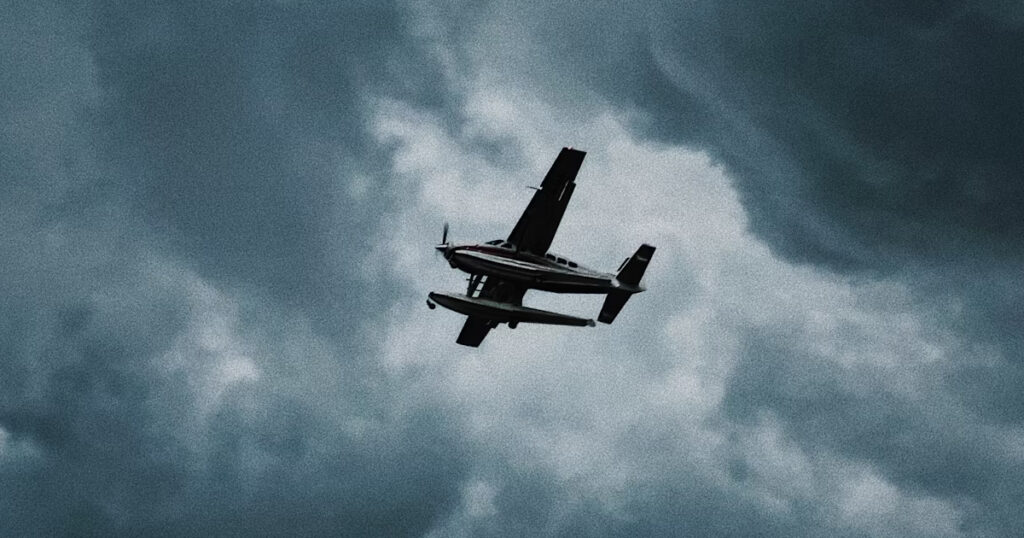When most people think of aviation, they picture airplanes soaring through clear blue skies. But for every flight that takes off and lands safely, there’s an often unseen force working behind the scenes – aviation weather. For pilots, understanding weather isn’t just an extra skill – it’s an essential part of safe, informed decision-making. In fact, weather is one of the leading causes of aviation-related incidents, especially among general aviation pilots.
At DreamFlight Charities, we believe that early exposure to aviation education can foster a lifetime of curiosity, discipline, and decision-making skills. That’s why we’re using the month of July to dive into the world of aviation weather. Whether you’re a student, an aviation enthusiast, or a future pilot, this introduction will help you grasp the basics of weather’s impact on flight and how pilots manager the ever-changing conditions of the skies.
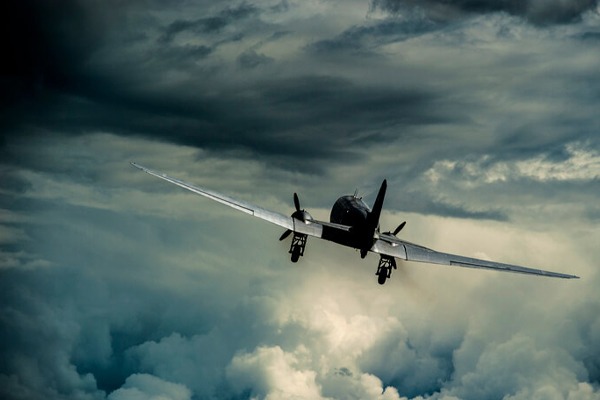
Why Weather Matters
Flying places unique demands on aircraft and pilots. While cars and boats can stop or pull over when visibility drops or a storm rolls in, those at the controls of an aircraft must often make fast decisions at thousands of feet above the ground – and sometimes hundreds of miles from the nearest airport.
Poor weather decisions can result in:
- Reduced visibility, especially due to fog or precipitation
- Turbulence from unstable air masses
- Icing that can impair an aircraft’s performance or the wings’ ability to generate lift
- Wind shear that can cause sudden changes in altitude or direction
- Thunderstorms, which can present dangerous updrafts, lightning, and hail
In short, understanding weather isn’t just about flying comfortably, it’s about flying safely.
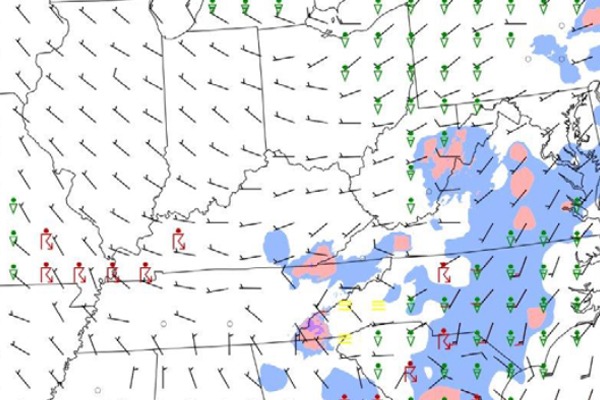
METARs and TAFs: Decoding Weather for Pilots
Pilots rely on two main weather reporting products for preflight planning: METARs and TAFs.
METAR (Meteorological Aerodrome Report)
A METAR is a current weather observation typically issued once an hour. It gives pilots a snapshot of what’s happening right now at a specific airport or weather station. Reports typically include:
- Wind direction and speed
- Visibility (in statute miles)
- Weather phenomena (e.g., rain, snow, fog)
- Sky conditions (cloud layers and their heights)
- Temperature and dew point
- Altimeter setting (for atmospheric pressure)
- Additional remarks (e.g., wind shifts, runway conditions)
Here’s an example of a METAR:
KLEX 031654Z 24010KT 10SM FEW045 SCT080 BKN120 30/21 A2992 RMK AO2
This tells this trained eye that Lexington, KY, has winds from the southwest at 10 knots, visibility of 10 statute miles, a few clouds at 4,500 feet, and a broken cloud layer at 12,000 feet. The temperature is 30°C, the dew point is 21°C, and the altimeter setting is 29.92 inches of mercury.
TAF (Terminal Aerodrome Forecast)
While METARs tell pilots what’s happening now, TAFs predict what’s coming in the next 24 to 30 hours. A TAF provides a forecast for conditions at and around an airport, broken into time blocks. TAFs typically include:
- Expected changes in wind, visibility, and weather
- Probabilities for specific weather conditions
- Timing for changes in sky coverage or precipitation
For instance:
TAF KLEX 031130Z 0312/0412 25008KT P6SM BKN100
FM031800 26012KT P6SM SCT050 BKN080
This forecast tells pilots that from 1800Z (2 PM local), they can expect 12-knot winds from the west and broken clouds at 8,000 feet. It helps pilots plan when conditions may deteriorate or improve at their destination or alternate airports.
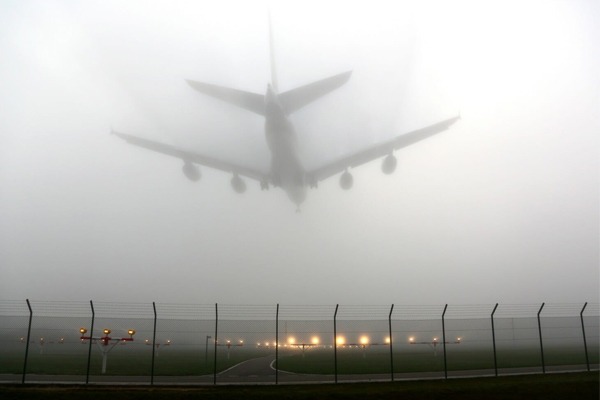
The Fog Factor
Few weather phenomena are more deceptively dangerous than fog. It can develop quickly – especially during early mornings or after rain – reducing visibility to just a few hundred feet or less. For VFR (Visual Flight Rules) pilots who rely on being able to see the horizon and other traffic, fog is a no-go.
There are many types of fog that a pilot should be familiar with:
- Radiation fog forms overnight as the ground cools and moisture condenses in the air.
- Advection fog occurs when warm, moist air moves over a cooler surface.
- Upslope fog is created by air cooling as it’s forced uphill by terrain.
- Ground fog is a thin, shallow layer that can still obscure runways or taxiways.
Even instrument-rated pilots must carefully consider if conditions allow for a safe approach and landing. Knowing fog patterns in your region – like morning fog near rivers in Kentucky or coastal fog in California – is part of a good preflight prep.
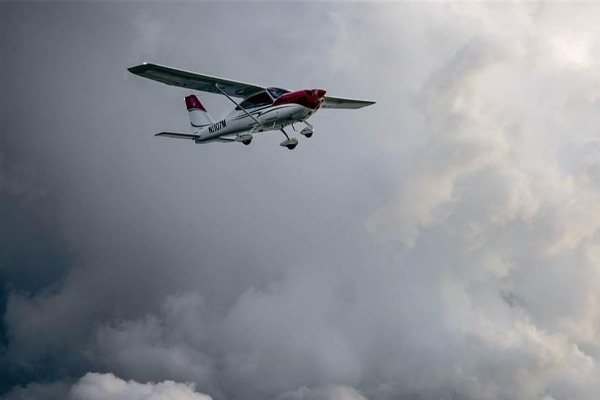
Leaving Yourself an Out
One of the most important principles in aviation weather planning is to “leave yourself an out.” This means never putting yourself in a situation where weather traps you with no safe options. It’s about building margins – in fuel, altitude, visibility, and alternate airports.
Here are just a few ways pilots leave themselves an out:
- Always check alternate airports: If your destination becomes IFR (Instrument Flight Rules), where else can you go?
- Build in fuel reserves: Don’t plan to land with bare-minimum fuel.
- Set personal minimums: Even if legal limits allow flight, your own experience and comfort level should guide your decisions.
- Update weather en route: Use in-flight tools to stay ahead of changing conditions.
- Know when to turn back: The ability to change plans or abort a flight is a mark of good airmanship – not failure.
This mindset is taught from day one in flight training and reinforced at every stage, from private pilot to airline captain. It’s not about fear – it’s about respect for the sky.
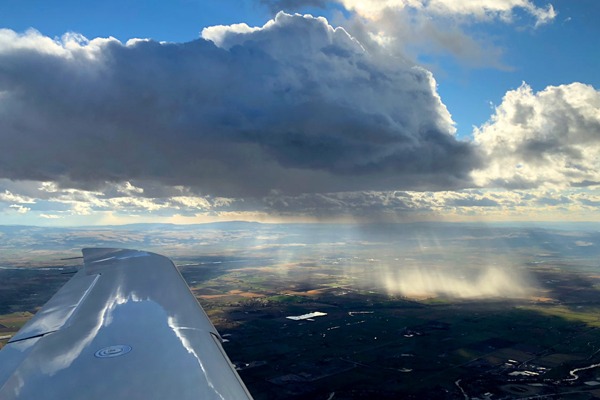
Practical Tips
If you’re a student exploring aviation, you might not yet be reading METARs like a second language. That’s okay! Here are a few tips to get you started:
- Download a weather app for pilots: Tools like ForeFlight (for pilots) or the FAA’s Aviation Weather Center (AWC) website let you view real-time METARs and TAFs.
- Learn common weather codes: Start with the basics like wind direction, cloud layers, and visibility.
- Watch local aviation weather patterns: Pay attention to how mornings differ from afternoons or how weather changes near hills, water, or open farmland.
- Join a flight club or ground school: DreamFlight’s upcoming OpenSkies Flight Club will dive into real-world applications of weather, navigation, and decision-making. Keep an eye on our calendar for our open house event and monthly meetings!
Aviation weather might seem intimidating at first glance, but it’s one of the most fascinating – and important – areas of flight knowledge. Every cloud, gust of wind, or barometric pressure change tells a story. Pilots learn to read these stories, anticipate changes, and make smart decisions that keep themselves and others safe.
So, whether you’re dreaming of becoming a pilot or simply love looking up at the sky, remember: the more you understand about weather, the deeper your appreciation for flight will grow.
Be sure to come back often as we continue breaking down aviation concepts and showing how they connect to everyday learning. And don’t forget to follow us on Facebook for videos, reels, and updates from our programs across Kentucky! Fly safe. Think smart. Dream big!

